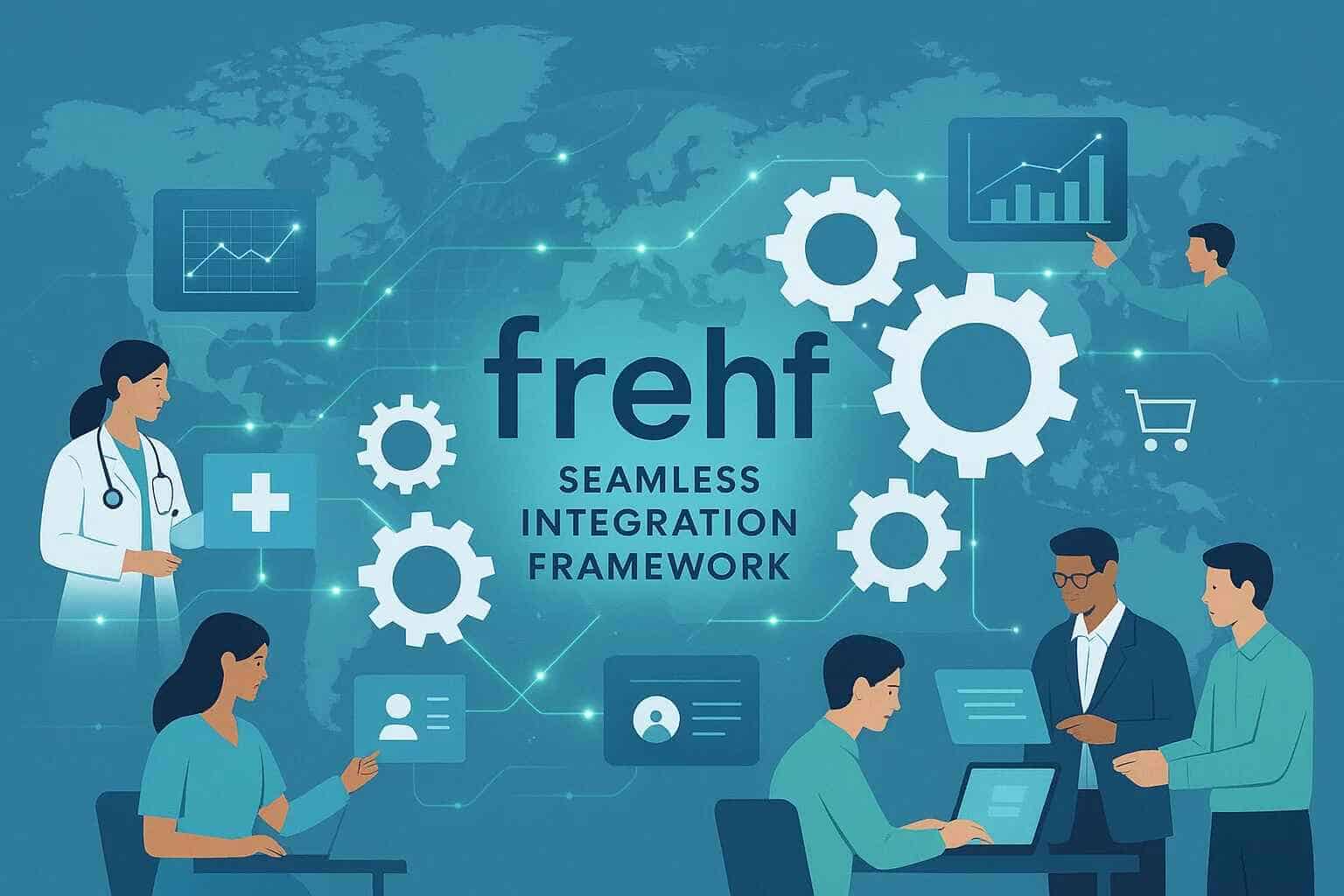Blog
Yukon Jack – Exploring the Bold Spirit with a Legendary Taste

Introduction
When it comes to alcoholic beverages that embody boldness, Yukon Jack stands in a league of its own. Known as “The Black Sheep of Canadian Liquors,” this unique whiskey-based liqueur carries an aura of rugged adventure and unapologetic personality. Its creation dates back to the mid-20th century, and since then, it has carved out a niche as a drink that captures the spirit of the wild.
What makes Yukon Jack stand out is its unique blend of Canadian whiskey, sweetened honey, and citrus notes. The result is a taste that’s rich and warming, with a tantalizing edge that lingers long after the last sip. Perfect for adventurers, mixologists, and casual drinkers, Yukon Jack appeals to anyone who appreciates bold flavors and versatility in their drinks.
Whether you’re sipping it neat, using it as a base for a cocktail, or seeking it out for its legendary status, Yukon Jack captures the imagination. This article will cover everything you need to know about Yukon Jack, from its origins and flavor profile to the best ways to enjoy it. If you’re ready to discover the drink that dares to be different, read on for a deep-dive into this iconic spirit.
The History and Legacy of Yukon Jack
The roots of Yukon Jack are steeped in mystery and adventure. Its name pays homage to the Yukon Territory in Canada, a land synonymous with cold winters, breathtaking landscapes, and untamed wilderness. While Yukon Jack doesn’t have a confirmed pioneer protagonist, its moniker suggests a rugged, independent spirit that evokes the gold rush era of the late 1800s.
Introduced to the market to challenge traditional whiskey norms, this liqueur was designed to be bold. Unlike other spirits, it includes honey and citrus, creating a unique spin on what a whiskey liqueur could aspire to be. Over the decades, its blend of sweet and spicy has earned a global following.
Its rugged branding, featuring wolves and imagery of the Yukon wilderness, reflects a lifestyle of adventure and individuality. Yukon Jack isn’t just a drink; it’s a symbol of pushing boundaries.
What Makes Yukon Jack Unique?
Yukon Jack isn’t your average spirit, and several factors make it stand out in a crowded world of liqueurs and whiskeys.
Unique Features of Yukon Jack:
- Canadian Whiskey Base
Unlike traditional whiskey, Yukon Jack combines sweetened elements with authentic Canadian whiskey, giving it a balance of smoothness and heat. - Honey and Citrus Flavor Profile
Yukon Jack’s sweetness comes from natural honey, while citrus notes add a tangy depth. - High Alcohol Content
With an ABV of around 50%, it packs an alcoholic punch, making it one of the stronger liqueurs available internationally. - Bold Branding
The branding is as daring as the drink itself, reflecting a rebellious edge and rugged charm.
Tasting Notes of Yukon Jack
For a drink with such a bold reputation, Yukon Jack delivers a surprisingly complex experience. Its tasting notes are a combination of warming sweetness and spicy bite that captivate anyone adventurous enough to give it a try.
- Appearance: Deep amber with a golden sheen.
- Aroma: Rich notes of honey, orange zest, and subtle spices.
- Taste: A robust flavor profile that starts with honeyed sweetness, transitions to citrusy brightness, and ends with a warming kick of whiskey heat.
- Finish: Smooth and lingering, with a slightly peppery aftertaste that keeps you coming back.
How to Enjoy Yukon Jack
The versatility of Yukon Jack means it can be enjoyed in multiple ways. Whether you’re a purist who likes it neat or someone who enjoys experimenting with cocktails, Yukon Jack offers options for everyone.
Ways to Drink Yukon Jack:
- Neat: Experience its bold flavors in their purest form.
- On the Rocks: A touch of ice enhances its smoothness.
- Cocktails: Mix Yukon Jack into classic recipes or create your own. Popular choices include the Snakebite Shot and Yukon Gold Rush.
- Warm Drink Mixer: Add it to hot tea or cider during cold seasons for a cozy twist.
Yukon Jack’s Role in Cocktail Culture
Yukon Jack has earned a place in cocktail culture for its ability to stand as both a base and a complementing liquor. The high alcohol content and unique flavor make it ideal for bold concoctions.
Popular Yukon Jack Cocktails:
- Snakebite Shot: Yukon Jack and lime juice create an energizing and tangy shot.
- Yukon Apple: Mix with apple cider for a crisp, refreshing drink.
- Gold Rush: A simple mix of Yukon Jack, honey, and lemon juice over ice.
Yukon Jack vs. Other Whiskey Liqueurs
Yukon Jack’s unique flavor and strength set it apart from other whiskey liqueurs like Drambuie or Southern Comfort. Here are some key differences that make it stand out.
- Flavor Profile: A bolder taste with pronounced citrus and honey notes.
- Alcohol Content: Higher ABV compared to its main competitors.
- Audience: Caters to adventurous spirits rather than conventional whiskey lovers.
Where to Buy Yukon Jack
Yukon Jack is widely available online and in liquor stores around the world. Major retailers like Walmart, Total Wine, and BevMo stock it, ensuring easy accessibility. Prices vary by region but generally range from $20 to $30 for a standard bottle. Keep an eye out for limited-edition releases or alternative flavor offerings.
FAQs About Yukon Jack
What are the main ingredients of Yukon Jack?
Yukon Jack is made with a Canadian whiskey base, sweetened with natural honey and infused with citrus flavors. The end result is a liqueur with a bold, sweet, and tangy profile.
Can Yukon Jack be used in cocktails?
Absolutely! Yukon Jack’s unique flavor makes it a versatile ingredient in cocktails. From simple shots like Snakebite to creative recipes like the Yukon Apple, it pairs well with a variety of mixers.
How does Yukon Jack compare to other whiskey liqueurs?
Yukon Jack stands apart due to its higher alcohol content, bold flavor profile, and unique blend of honey and citrus. It’s designed for those who prefer a daring, adventurous drink.
https://theusacorner.com/marco-polo-sheep-facts/
Blog
What is Transds? A Deep-Dive Into Its Potential and Applications

Introduction
Transds is steadily gaining attention in professional and academic circles for its versatility and impact. But what exactly is it? This comprehensive guide will unpack everything you need to know about Transds, from its origins and benefits to its real-world applications. Whether you’re discovering this term for the first time or seeking advanced insights, this article will provide value tailored for a global audience.
The Fundamentals of Transds
Transds refers to a revolutionary approach that intertwines multiple disciplines, processes, or methodologies to solve complex problems. Unlike traditional systems that remain rigidly confined to specific frameworks, Transds thrives on versatility. It fosters innovation by combining diverse perspectives.
Why is Transds Relevant?
- Its adaptive structure is ideal for addressing multifaceted issues.
- Encourages collaboration across industries and disciplines.
- Supports innovation by leveraging diverse approaches.
For example, in environmental research, Transds might involve merging technological tools with ecological knowledge to find sustainable energy solutions. It minimizes boundaries and opens doors for innovation like never before.
Origins of Transds and Its Evolution
Transds wasn’t born overnight. Historically, disciplines worked independently. However, increasing global complexities demanded interdisciplinary solutions, which paved the way for Transds practices. Academic institutions promoted cross-departmental studies that rewarded problem-solving approaches borrowing from multiple fields.
Transds has since evolved as industries recognized the need for diverse collaboration. Whether in science, business, or education, this strategy enhances adaptability in fast-changing environments. Key breakthroughs in artificial intelligence (AI), such as integrating human-centered design with machine learning models, were facilitated by Transds practices.
Key Benefits of Employing Transds
Businesses and organizations worldwide are integrating Transds strategies, reaping numerous benefits.
- Improved Problem Solving
-
- Merging multiple perspectives uncovers blind spots.
- Enables flexible responses to complex challenges.
- Enhanced Innovation
-
- Encourages thinking “outside the box” using diverse input.
- Reduces the redundancy of siloed systems.
- Cost Efficiency
-
- Optimizes resource use by avoiding duplication of efforts.
Transds can create synergy between previously incompatible methodologies. For instance, using behavioral psychology alongside engineering principles has advanced product development.
Real-World Applications of Transds
Healthcare
One of the most prominent examples of Transds is in medicine. Interdisciplinary approaches—merging genetics, AI, and patient history—enable breakthroughs, including early disease detection.
Business Strategy
Transds applications improve operational efficiency, combining data analytics with human resource strategies to boost employee productivity and business outcomes.
Education
Educational institutions promote Transds learning to foster adaptability in students, equipping them for industries not yet imagined.
The Role of Technology in Advancing Transds
Modern technology fuels the growth of Transds. Artificial intelligence, cloud computing, and big data have accelerated the ability for disciplines to integrate seamlessly. Here’s how technology empowers this concept:
- AI advanced analytics allow data-driven insights across sectors.
- Cloud platforms facilitate collaboration in real-time.
- Data fusion integrates datasets from multiple disciplines for maximum impact.
These tools ensure that Transds becomes the norm—not the exception—in fast-evolving industries.
Challenges of Implementing Transds
Despite its benefits, Transds doesn’t come without obstacles:
- Lack of training: A workforce skilled in only one field may resist cross-functional projects.
- Costs: Initial implementation stages require significant investment in resources.
- Cultural differences: When integrating perspectives globally, cultural barriers could cause friction.
However, these challenges can be mitigated by clear communication, ongoing education programs, and reinforcing collaboration at all levels.
Future Trends in Transds Practices
Looking ahead, Transds is expected to influence how problems are addressed globally. Trends include:
- Mass adoption of AI-powered tools
-
- Real-time collaboration will redefine problem-solving.
- Broader inclusivity across industries
-
- Global crises, such as climate change, demand joint efforts.
- Policy frameworks supporting Transds
-
- Governments may strategize cross-department collaborations, fostering innovation.
Misconceptions About Transds
Not all collaborative efforts equate to true Transds practices. Here are a few misconceptions:
- It’s just brainstorming! Collaboration is structured, not random idea-sharing.
- Suitable for every task: Transds shines in complex challenges, but it isn’t necessary for straightforward tasks.
- Immediate results: Initial projects may take longer due to coordination needs, but long-term gains make it worthwhile.
Steps to Incorporate Transds Into Workflows
Want to implement Transds in your organization? Follow these tips:
- Identify Needs: Map out challenges that require an interdisciplinary approach.
- Engage Stakeholders: Gather individuals and teams with diverse expertise.
- Invest in Tools: Use collaboration tools like Slack, Trello, or Monday.com for fluid project management.
Foster an open culture where ideas from differing disciplines aren’t just accepted but are actively sought out.
FAQs about Transds
What distinguishes Transds from traditional systems?
Transds involves merging perspectives from multiple disciplines to build holistic solutions. Traditional systems typically isolate fields of expertise, limiting innovation possibilities.
Is Transds applicable to individuals or only large organizations?
It applies to both! While large corporations often use it for systemic innovation, individuals can employ Transds thinking in freelancing, creative projects, or education.
How long does it take to see results with Transds strategies?
Results vary based on industry and project complexity. While long-term projects could take months, smaller collaborative tasks might show benefits instantly!
What makes Transds essential in global collaboration?
By transcending geographical and disciplinary boundaries, Transds brings global expertise to the table. It ensures inclusivity while reducing duplication of efforts.
Are there costs involved in implementing Transds?
Yes, but costs vary based on scope. Investing in collaboration tools and cross-disciplinary teams may contribute to initial expenses.
Conclusion
Transds is no longer a “nice-to-have” but a necessity in today’s dynamic landscape. From healthcare to technology, it redefines how solutions are created—by merging perspectives, driving innovation, and solving complex issues. Organizations that harness the power of Transds will inevitably stay ahead of their competition.
For individuals or businesses looking to begin integrating Transds, the key lies in openness to collaboration and foresight in leveraging the right tools. The potential is limitless if approached strategically—an investment in Transds is an investment in the future.
https://theusacorner.com/discover-how-laaster-enhances-innovation-and-scalability/
Blog
Discover How Laaster Enhances Innovation and Scalability

Introduction
If you’ve come across the term “laaster” and are curious about its meaning, uses, and significance, you’re not alone. This keyword is gaining traction in diverse industries, yet its nuances often confuse people. Whether you’re a business professional, tech enthusiast, or someone casually exploring, you’ll find immense value in learning about it. From its applications in modern industries to its benefits and key differentiators, this guide unpacks “laaster” in a way that you’ll understand clearly.
Through this detailed exploration, we’ll not only define what laaster means but also look into its various implementations. By the end, you’ll have actionable insights and a newfound comprehension of how this keyword plays into innovation, efficiency, and strategy.
If staying ahead matters to you, understanding laaster isn’t just optional—it’s essential. Read on for a rich, informative breakdown along with FAQs to resolve any lingering doubts.
What Is Laaster?
Laaster is a versatile term primarily used in contexts requiring optimization, efficiency, or advanced systems. While its exact meaning may vary across fields, laaster typically signifies a high-performing method or tool aimed at improving processes.
Key Characteristics of Laaster
- Flexibility – Laaster adapts to various industries like technology, design, and commerce.
- Efficiency – Its integration optimizes time management and resource allocation.
- Scalability – Laaster scales easily, accommodating both small tasks and large operations.
For example, in technology, laaster tools help automate repetitive tasks, saving both effort and labor costs. For industries like sustainability, laaster processes often promote eco-friendly practices or reduce waste.
By focusing on streamlined operations, laaster enhances both quality and speed, becoming indispensable in today’s fast-evolving markets.
Why Is Laaster Relevant Today?
The modern world demands quicker and smarter approaches to solve problems, and laaster delivers on these fronts. Its significance lies in both its ability to innovate and its adaptive applications.
Applications Across Sectors
- Technology – Tools classified under laaster often promote automation or artificial intelligence.
- E-commerce – Better inventory systems or customer service enhancements often use laaster techniques.
- Healthcare – Data processing systems utilizing laaster improve diagnostics and treatment outcomes.
For companies prioritizing growth while maintaining quality, laaster ensures they stay ahead competitively.
Benefits of Implementing Laaster
If you’re unsure why you should explore laaster, its advantages make a strong case. Below are several game-changing benefits you can achieve with laaster practices or tools.
Major Benefits
- Cost Savings – Minimized operational waste lowers expenditure.
- Error Reduction – Automation eliminates human error, boosting reliability.
- Faster Turnarounds – Processes move quicker, meeting deadlines with ease.
- Sustainability – Most laaster methods align with green-focused objectives.
While not exclusive to one industry, these traits are scalable across business sizes or models, making them universally appealing.
How Does Laaster Work in Technology?
Technology is where laaster shines most. From its ability to ease workflows to its contribution in innovative problem-solving, this field sees widespread adoption.
Examples in Action
- AI-Based Algorithms – Using laaster-engaged codes for smarter predictive analytics.
- Automation Bots – Geared toward handling large-scale monotonous tasks.
- Cloud Scaling – Laaster systems aid in allocating resources dynamically as demand rises or falls.
These robust frameworks deliver high-efficiency technical operations, often surpassing human thresholds effortlessly.
Challenges When Using Laaster
Even though laaster provides major advantages, some challenges do arise during integration or execution. Understanding these ahead helps mitigate unnecessary disruptions.
Common Issues
- Costly Initial Setup – Implementing advanced methods can strain budgets initially.
- Learning Curve – Adapting to laaster tools requires employee training sessions.
- Scalability Can Be Tricky – While easy to scale, poor strategy leads to temporary instability.
Fortunately, most of these challenges diminish over time, especially with proper on-boarding practices.
How to Get Started With Laaster
Adopting new technology or practices might feel overwhelming, but small steps simplify the process. Your goal should focus on progressive transitioning rather than abrupt overhauls.
Steps for Early Adoption
- Identify Pain Points – Recognize weak spots in your current processes.
- Research Tools – Compare laaster solutions available in your industry.
- Pilot Programs – Test laaster practices or software on a smaller scale first.
- Training Teams – Ensure your workforce gets access to necessary skills.
Quick wins here will fuel your confidence and ease further scaling.
Is Laaster Right For Every Industry?
While laaster suits many sectors, nuances exist that determine its utility. Industries heavily reliant on digitization or streamlined production gain more from its perks.
When Does Laaster Not Apply?
- Traditional Handicrafts – Laaster tools disrupt manual artistry.
- Industries Without a Tech Backbone – Sectors with minimal tech adoption often see no added value.
Still, as technology grows universal, more businesses will likely profit from gradual laaster adoption.
The Future of Laaster
Expect growth and innovation regarding laaster’s applications and availability. Thanks to its easy adaptability, it’s paving the way for smarter solutions in every major economic sector.
Predictions suggest even tighter integration between laaster and AI-powered ecosystems such as deep learning or IoT.
FAQs About Laaster
What is the basic definition of laaster?
Laaster generally refers to a high-performing process, system, or tool aimed at increasing efficiency while improving output quality. Its versatility makes it applicable in numerous fields ranging from tech to marketing.
How can small businesses benefit from laaster?
Small businesses particularly gain from laaster’s cost-saving potential, faster time management, and improved scalability options. With smaller operations, even modest efficiency boosts make significant differences.
Is laaster difficult to implement?
Implementation depends on complexity levels. Simple tools labeled under laaster require minimal expertise, but enterprise-level systems may involve multi-tier onboarding phases.
Does laaster replace humans entirely?
No, laaster complements human capabilities rather than replacing them. For instance, automation powered by laaster enhances manual employees by reducing redundant tasks.
Are laaster tools expensive?
Some platforms feature entry-level pricing models, allowing businesses on tighter budgets easier entry. More advanced systems, however, do carry significant upfront investment costs.
Are there industries where laaster isn’t useful?
Certain sectors like traditional crafts or low-tech domains may find minimal utility with laaster due to its reliance on specific technological infrastructures.
How quickly can businesses expect results from laaster?
Timelines differ by industry and scope—but successfully implemented laaster often begins yielding noticeable ROI within six to twelve months.
Conclusion
Understanding laaster isn’t just about knowing a concept—it’s about leveraging it for better outcomes in both work and life. From faster transitions to resource savings, the tangible benefits speak for themselves. However, the trick lies in thoughtful implementation. Proper research into existing solutions, incremental adoption, and team buy-ins will ensure you gain valuable outcomes from any laaster integration.
Whether you’re eyeing improved business workflows or broader organizational transformation, starting with small pilot programs remains key. Overcoming initial hurdles won’t just boost operational strength; it will set the stage for long-term progress shaped by innovation itself.
https://theusacorner.com/unlock-the-power-of-frehf-for-seamless-integration/
Blog
Ombudsmänner – Key Insights into Their Function and Importance

Ombudsmänner: Guardians of Fairness and Justice
Introduction
The concept of “ombudsmänner” may sound unfamiliar to some, but these individuals play an essential role in ensuring fairness and justice across various sectors. Derived from the Swedish term “ombudsman,” which means “representative,” the role is synonymous with impartiality, advocacy, and resolution. Whether addressing disputes in government, private organizations, or public institutions, ombudsmänner act as a bridge between individuals and systems, ensuring proper redress and equitable treatment for all.
This post explores the multifaceted world of ombudsmänner, their history, and their impact globally. We’ll also unpack how they function, the challenges they face, and their evolving relevance in an increasingly complex world. If you’ve been curious about the mechanisms behind conflict resolution or are wondering how ombudsmänner might help address grievances, this article provides the clarity you need.
By the end of this piece, you’ll not only know what ombudsmänner are but also gain valuable insights into their importance in safeguarding fairness in diverse arenas.
Who Are Ombudsmänner?
Ombudsmänner, or ombudsmen, are professionals tasked with investigating complaints and mediating disputes. Their primary goal is to advocate for fairness, offering an impartial review of cases where individuals or groups believe they have been treated unjustly.
Key Features of Ombudsmänner Roles:
- Neutral Advocacy: They neither take sides nor enforce decisions but aim to mediate and resolve conflicts.
- Accountability Providers: By holding organizations accountable, they promote transparency and ethical conduct.
- Accessibility: Anyone, irrespective of their background, can typically approach ombudsmänner for help without financial barriers.
These individuals operate across various domains, including public sector administration, corporate governance, human rights, and more. By serving as independent arbiters, they empower citizens and employees alike, ensuring voices are heard and justice is served.
The History of Ombudsmänner
The concept of ombudsmänner dates back to Sweden in 1809, making it a well-established institution with roots in democratic oversight. Initially designed as a way to monitor the government, the title has since expanded into various fields, influencing other nations to adopt similar frameworks.
How the Role Evolved Globally:
- Expansion Beyond Government: Many corporations introduced ombudsmänner to ensure workplace ethics.
- Specialized Ombuds Roles: Today, you’ll find ombudsmänner dedicated to fields like healthcare, education, and financial services.
- Global Recognition: Countries like the UK, Canada, and Australia have robust frameworks replicating the Swedish model to varying degrees.
From curbing administrative abuse to strengthening consumer protections, their historical evolution underscores a universal need for fairness.
Why Ombudsmänner Are Essential in Modern Times
Ombudsmänner remain critical today, thanks to increasingly complex systems and rising public expectations for accountability. People need straightforward ways to address grievances without navigating opaque legal processes, and ombudsmänner fill this gap effectively.
The Key Benefits of Ombudsmänner:
- Promote Justice in Bureaucratic Systems
- Offer Quick Conflict Resolution
- Encourage Trust Across Institutions
For instance, higher education ombudsmänner help students resolve issues related to admissions or course progression, while corporate ombudsmänner may address workers’ grievances about pay and workplace harassment.
Without their role, many ordinary citizens might feel unheard or powerless against larger institutions.
How Do Ombudsmänner Operate?
While the scope of each ombudsmänner’s duties varies, their approach generally involves a combination of listening, investigation, and solution orientation.
The Typical Process:
- Receiving Complaints
Ombudsmänner ensure accessibility by encouraging complaints through email, phone, or physical forms.
- Conducting Assessments
They review cases to determine legitimacy and jurisdiction without bias.
- Facilitating Resolutions
Ombudsmänner mediate solutions that work mutually, often without the need for litigation.
Their non-binding recommendations often garner high compliance rates simply because their fairness enhances credibility.
The Challenges Ombudsmänner Face
Despite their effectiveness, ombudsmänner encounter several challenges, primarily because their recommendations lack enforceability. Other issues include limited public awareness about their role and insufficient budgets to operate effectively.
Notable Challenges Highlighted:
- Lack of enforcement power in certain jurisdictions
- Resistance from institutions not willing to be transparent
- Linguistic and cultural challenges when mediating across global systems
Addressing these issues requires broader structural support and greater public advocacy to bolster their impact.
The Global Impact of Ombudsmänner
Ombudsmänner impact systemic changes by identifying recurring complaints and recommending policy reforms. Beyond the individual cases they address, their work influences widespread improvements in transparency and fairness.
Examples of Their Global Success:
- Consumer protection organizations have reduced unfair banking practices.
- Workplace ombudsmänner have helped create safer environments for employees worldwide.
This shows how versatile and impactful their work truly is.
How to Find an Ombudsmann Near You
If you need assistance from an ombudsmann, consider these steps to identify the right professional:
- Search by Industry: Most sectors, like higher education, healthcare, or finance, list ombudsmänner publicly.
- Consult National Resources: Many countries maintain dedicated ombuds offices.
- Seek Local Referrals: Community centers can also direct you to the appropriate ombuds channel.
The right ombudsmann can make a significant difference in resolving your problem.
The Role of Technology in Ombudsmänner Operations
Technological advancements are enhancing how ombudsmänner address disputes today. From online complaint systems to AI-assisted case reviews, these innovations are improving response times and accuracy.
While human judgment remains at the heart of their work, these tools provide better access and efficiency for all parties involved.
Conclusion
Ombudsmänner are vital mediators in a world where conflicts are inevitable but fairness should never be optional. Their ability to offer unbiased, constructive solutions ensures that individuals and organizations alike can maintain trust and accountability.
Whether you’re facing a workplace issue, a consumer complaint, or a public sector problem, ombudsmänner provide the tools, guidance, and impartial oversight necessary to establish fairness.
By understanding their role and how to access their services, you open the door to quicker resolutions and institutional improvements. Ultimately, ombudsmänner uphold the principles of justice in ways that empower individuals while transforming systems.
FAQs
What Does an Ombudsmann Do?
An ombudsmann investigates complaints and resolves disputes impartially. They ensure fairness by mediating between complainants and organizations, recommending solutions to address grievances effectively.
How Can an Ombudsmann Help Me?
If you feel wronged by a decision or action, an ombudsmann can provide impartial mediation without requiring you to engage in formal litigation. They work to resolve conflicts quickly and fairly.
Do Ombudsmänner have Legal Powers?
The powers vary by jurisdiction and role. While most ombudsmänner can investigate and recommend actions, some in specialized sectors may have legal authority to enforce decisions.
Where Can Ombudsmänner Be Found?
Ombudsmänner services are typically available in government, corporate, and public institutions. For example, universities often have their own ombudsmänner for students.
Are Ombudsmänner Independent?
Yes, independence is a critical aspect of their role. To maintain credibility and impartiality, ombudsmänner operate without external pressures.
Do I Need to Pay for Ombudsmann Services?
Most ombudsmänner provide services free of charge, especially those operating in public sectors. However, consult specific institutions for details.
Which Countries Use Ombudsmänner?
Countries like Sweden, the UK, Canada, Australia, and New Zealand widely use ombudsmänner, with frameworks adapted to their local needs.
What Challenges Do Ombudsmänner Face?
They often struggle with limited enforcement power, resistance from institutions, and public awareness issues, emphasizing the need for greater systemic support.
Are Ombudsmänner Effective?
Yes, their role in fair conflict resolution has proven to build trust, ensure justice, and improve institutional practices over time.
Blog
Unlock the Power of Frehf for Seamless Integration

Introduction
In an interconnected world driven by innovation, the ability to simplify, streamline, and enhance efficiency is paramount. Enter frehf, a versatile paradigm that has become a vital asset in various industries. Whether you’re in technology, healthcare, or business, the potential of frehf to optimize operations and foster growth is monumental.
But what exactly is frehf? Why is it gaining traction worldwide? And how can individuals and organizations leverage its full potential? This complete guide provides an actionable roadmap to help you integrate frehf into your workflows effectively while demystifying its core principles.
By the end of this article, you’ll understand the ins and outs of frehf, how it applies across multiple domains, and actionable strategies to start leveraging it to drive meaningful results.
Now, let’s dig deeper to uncover how frehf can revolutionize the way we work, innovate, and grow.
What Is Frehf and Why Does It Matter?
Frehf refers to a cutting-edge framework that enhances interoperability, scalability, and simplicity across systems or processes. At its heart, frehf streamlines complex tasks by breaking them into manageable and understandable components.
Benefits of Frehf:
- Cross-Compatibility: Easily integrates with existing tools or platforms.
- Scalability: Grows alongside your business or infrastructure needs.
- Efficiency: Cuts down operational redundancies, saving time and resources.
From startups to multinational corporations, utilizing frehf helps reduce bottlenecks while improving productivity.
The Role of Frehf Across Industries
Frehf is not confined to one niche; it’s a universal tool with boundless applications. Here’s how some industries are benefiting from its adoption:
1. Technology and IT:
- Facilitates seamless data migration between systems.
- Improves software integration.
2. Healthcare Industry:
- Enhances patient data sharing securely.
- Reduces administrative workflow errors.
3. Retail and E-commerce:
- Automates customer relationship management (CRM).
- Strengthens supply chain operations.
Understanding its cross-industry value makes the case for adopting frehf universally compelling.
How to Implement Frehf for Maximum Impact
Rolling out frehf requires careful planning that aligns with specific organizational goals.
Steps to Get Started:
- Perform a Needs Analysis: Identify where processes need optimization.
- Select Your Tools: Choose platforms compatible with frehf.
- Train Your Teams: Ensure employees understand its practical benefits.
- Test and Iterate: Pilot small programs, gather feedback, and refine them.
By following these steps, you set the stage for success with frehf.
Frehf in Action: Case Studies
1. Streamlining IT Infrastructure
Consider a mid-sized tech company facing integration challenges across its teams. By incorporating frehf principles, the company reduced downtime by 40% and monetized previously siloed data.
2. Revolutionizing Patient Care
A healthcare facility adopted frehf-based systems to streamline data-sharing across departments, leading to improved patient care and faster diagnoses.
Top Tools and Resources for Getting Started with Frehf
When implementing frehf, it’s crucial to select the right tools. Here are some must-haves:
Tools:
- Integration Platforms: APIs like Zapier and MuleSoft.
- Collaboration Tools: Slack, Microsoft Teams.
- Optimization Trackers: Monday.com or Trello.
These tools make it easier to bring frehf to life in your specific context.
Actionable Tips to Avoid Common Frehf Mistakes
While the benefits of frehf are plenty, improper implementation can hinder success. Here’s how to avoid pitfalls:
- Overloading Systems: Start small and scale gradually.
- Ignoring Employee Feedback: Foster collaborative adoption.
- Skipping Data Security Measures: Prioritize compliance and safety standards.
Mindful adoption ensures sustained returns on your frehf strategy.
The Future of Frehf
The evolution of frehf is an exciting frontier. Experts predict that as technology advances, frehf will become even more intuitive, fostering enhanced integrations powered by IoT, AI, and machine learning.
Organizations that become early adopters will not only thrive today but also gain a significant competitive edge tomorrow.
Frequently Asked Questions
What Does Frehf Stand For?
While frehf doesn’t have a standardized full form, it embodies principles like flexibility, reliability, and efficiency in systems and practices.
How Do I Know If Frehf Is Right for My Business?
Evaluate your organization’s challenges, particularly in process efficiency or systems integration. If these are pain points, frehf could be a game-changer for you.
Are There Industry-Specific Tools for Frehf?
Yes, industries like healthcare and e-commerce have custom solutions designed to embed frehf principles seamlessly into their workflows.
Is Frehf Cost-Effective for Small Businesses?
Absolutely. Frehf-focused solutions are scalable, making them accessible even for startups and small enterprises aiming to streamline processes efficiently.
How Long Does It Take To Implement a Frehf Framework?
This depends on the complexity of your current systems, but most organizations see tangible results within 6-12 months post-adoption.
Conclusion
The world is changing, and innovative frameworks like frehf are leading the charge in simplifying workflows, driving efficiency, and scaling future-ready businesses. From its practical benefits in industries to implementation tips and advanced tools, frehf offers countless opportunities for you to optimize your operations.
Whether you’re an entrepreneur, a team leader, or an organizational decision-maker, integrating frehf can transform how you approach challenges and achieve goals. Start your frehf adoption today and reap the benefits of a smarter, faster, and more efficient system.
https://theusacorner.com/united-airlines-flight-ua770-emergency-diversion/
-

 Health & Fitness7 days ago
Health & Fitness7 days ago5 Tips to Avoid Sports Related Injury
-

 Tech5 days ago
Tech5 days agoRevo Technologies Murray Utah: Innovating Across Industries
-

 Lifestyle6 days ago
Lifestyle6 days agoSigns You’ve Lived Before: Exploring Past Life Clues
-

 Blog5 days ago
Blog5 days agoProtocolo Operacional Padrão Explained: Boost Consistency and Productivity Today





